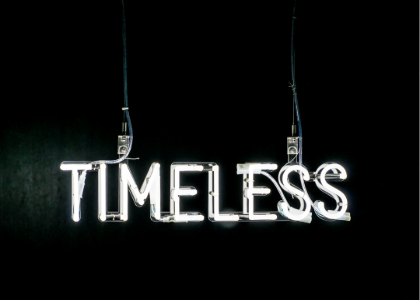Blog

Logo Background: Colored or Transparent?
When creating your logo, you need to think about type and style, font and color palette. Once all the pieces have been put together, there's the question of the background. What's best? Should you choose a colored or transparent background for your logo? Let's take a closer look.
The importance of your logo background
All the components of your logo are important and can help convey a particular message. This includes the background of your logo. Some companies choose to use a colorful background, while others opt for a transparent background. This can be a way of playing with your brand components or a color contrast to draw attention. A colored background can also be great if you want to produce promotional items. Note, however, that there are a few rules to follow to ensure that you can easily use your logo everywhere.
Should you choose a colored or transparent background?
Now, what's best for you? Should you choose a colored or transparent background for your logo? We've found advantages and disadvantages for both options.
A colored background
Let's start with colored backgrounds. They can help you give your logo a specific effect, especially if it's relatively simple. You can also use them to create contrasts or when text or components are white.
On the other hand, using a colored background can create a certain visual impact while giving you the opportunity to show originality. For example, you might decide to use a warm color to attract attention, or a cool color for a soothing effect.
Examples of companies using a logo with a colored background: Lego, McDonald's, Facebook and The Home Depot.
Choosing the perfect color for your logo background
If you're interested in the option of colored backgrounds, you need to choose the right color to achieve an interesting result. In fact, we advise not using more than three colors when creating your logo. You also need to ask yourself what effect you're trying to achieve.
For a more neutral background, you could use beige, grey or black. For something eye-catching, you could opt for a complementary color to create a high contrast, or a warm color like red, pink, orange or yellow. Another idea would be to take a lightly used color from your logo and use it for the background. There should be a connection between the logo and the background.
For more information on this subject, take a look at our article on color palettes.
A transparent background
These days, more and more logos have at least one version of their logo with a transparent background. There are several reasons for this. First, it brings a certain flexibility. You don't need to use a background color to make the whole thing look seamless, for example, on a business card or website header. Some mediums also require a transparent background for the best results.
As well, using a logo with a colored background can look amateurish in some cases. It's essential to use the right file format for your emblem. JPG files will always have a colored or white background, while PNG files allow for a transparent background. JPGs are generally preferable for heavier, more complex images such as photos.
Examples of companies with transparent backgrounds: Nike, Chanel, Target and Apple.
How to set a transparent background in FreeLogoDesign
If you're using the FreeLogoDesign editor to create your logo, you should know that it's possible to set a transparent background. Here's how to do it.
To begin, in the editor, click on Background. On the right, you'll see a box with the color used for the background. Click on the square to access the different color options. To make the background transparent, select the box with the red line through it. This indicates that you don't want a background for your logo.
Please note, however, that to upload your logo without a white or colored background, you must choose one of our paid plans. Free logos will have a white background, even if the file is PNG.
How do I get a logo with a transparent background?
As mentioned above, to have a transparent background, you need to make sure you're using the right file format. So, make sure you have at least one PNG version of your logo. Except for vector files like SVG, PNG is the format of choice for logos in general, especially if you've chosen to have a transparent background.
On the web, JPGs are preferable for images and photos. For logos, PNGs are preferred.
In conclusion, is it better to have a logo with a colored or transparent background? In our opinion, a transparent background offers greater flexibility and will be easier to use on the web. However, there's nothing stopping you having one version with a colored background and another without to ensure that you can use your logo anywhere without any problems.
Whatever color you use, don't forget to note the color codes in a brand guide. That way, you'll ensure consistency, whether on your social media networks or in print.
More tips and tricks on the blog


